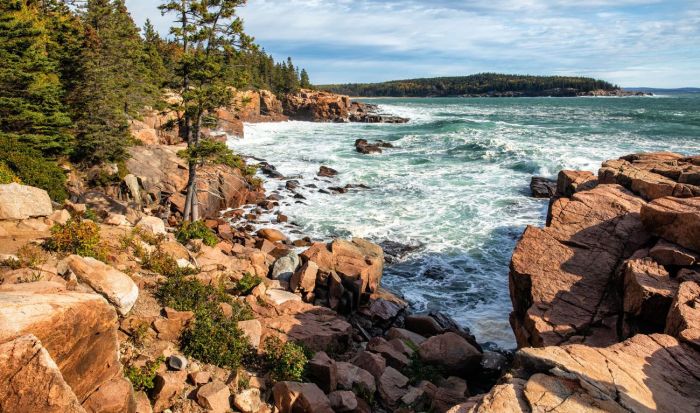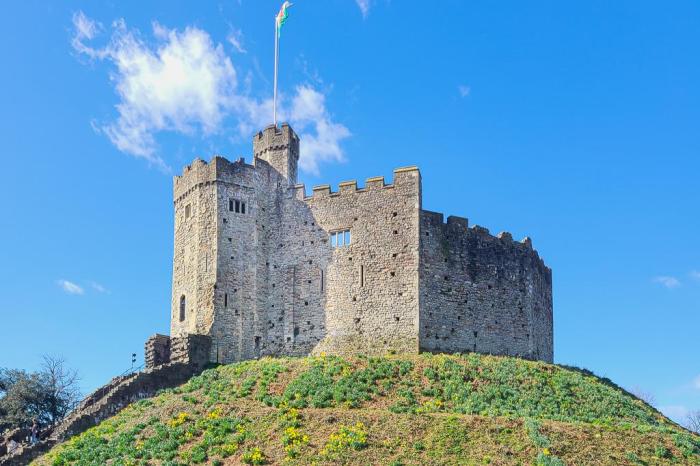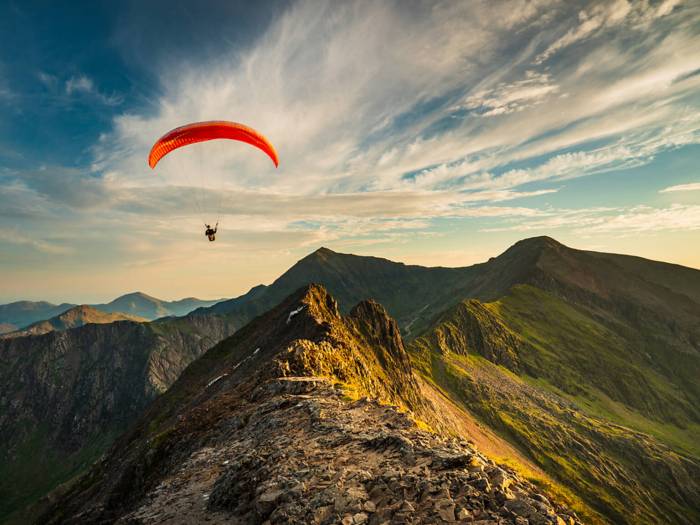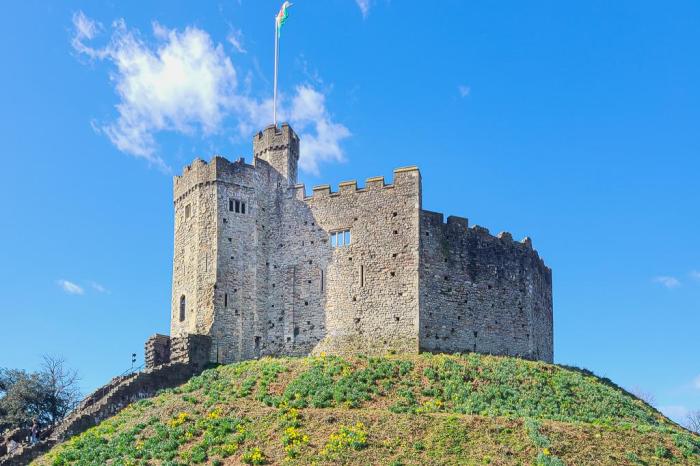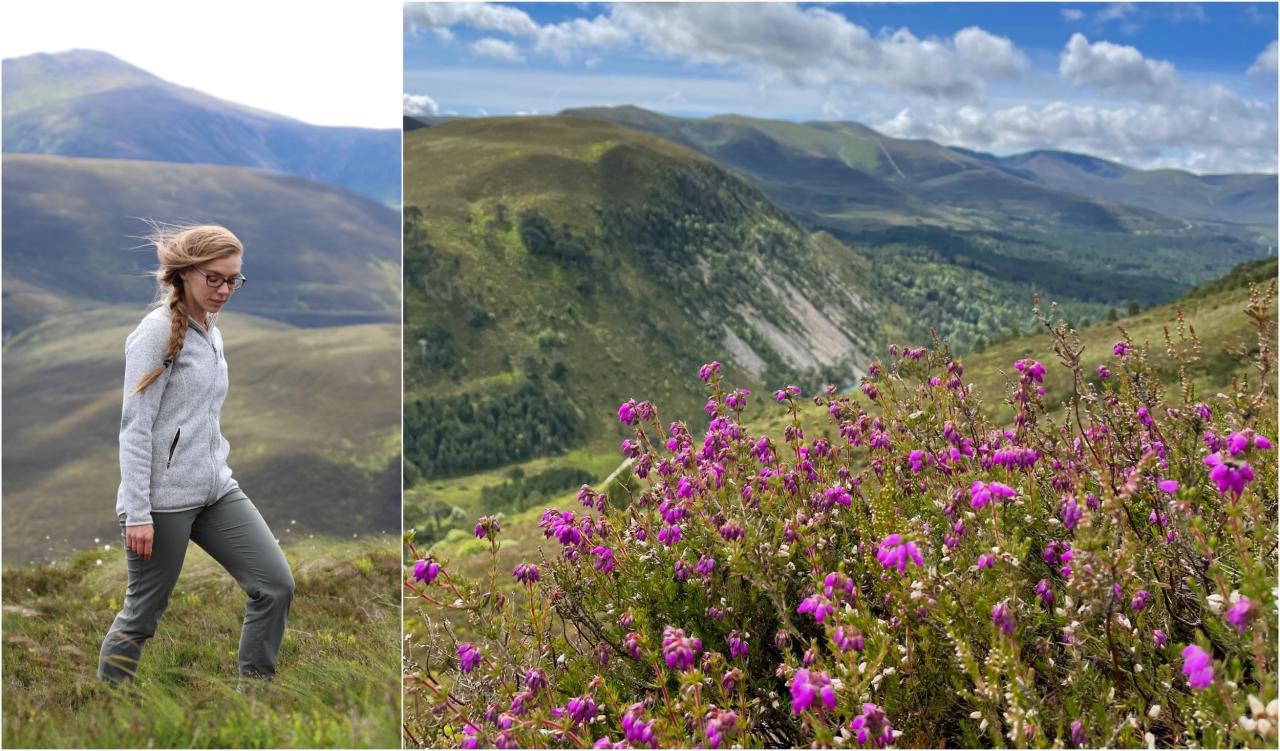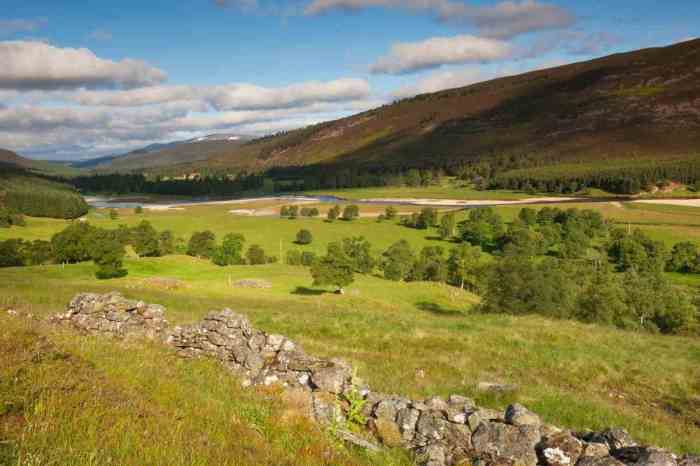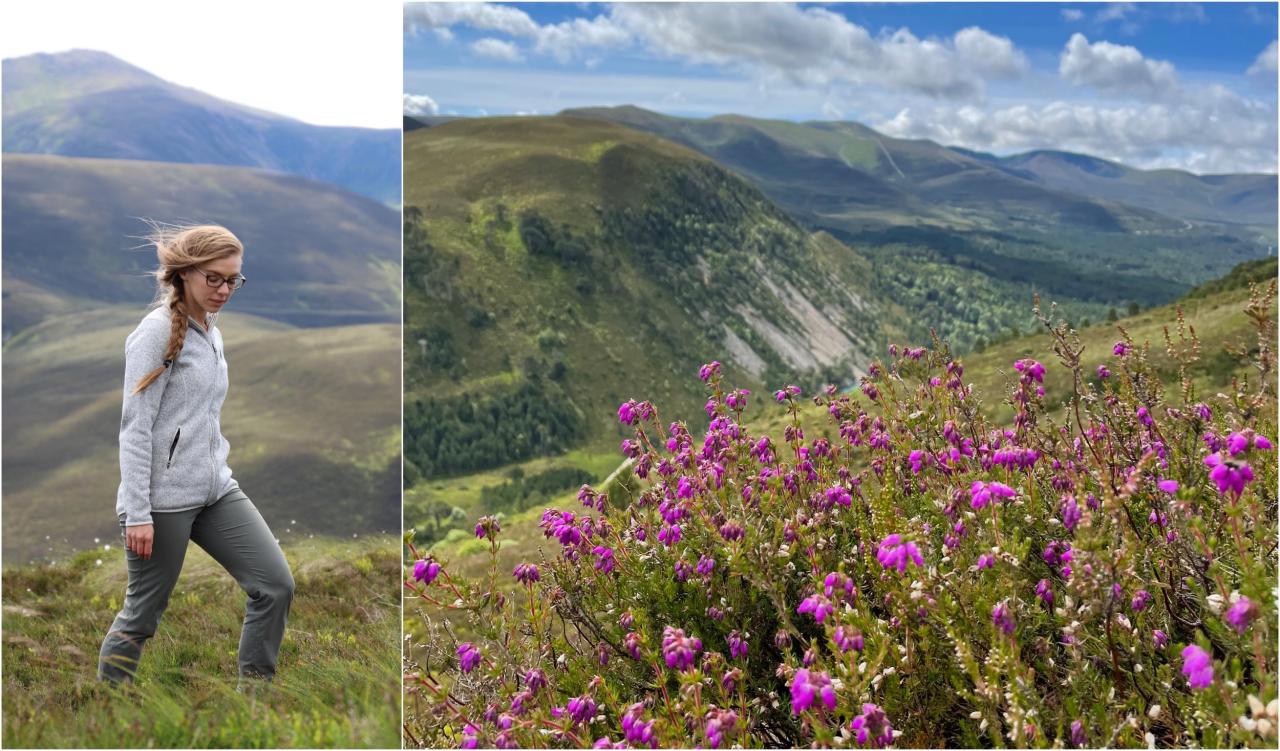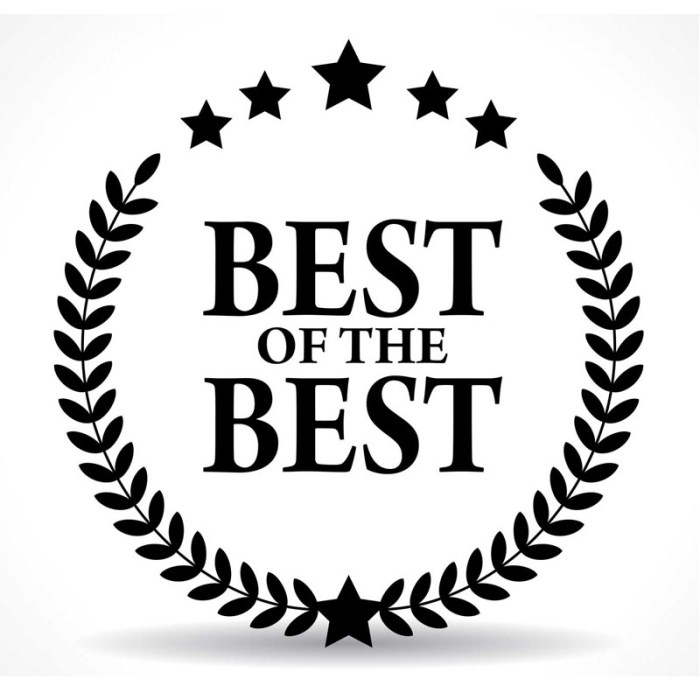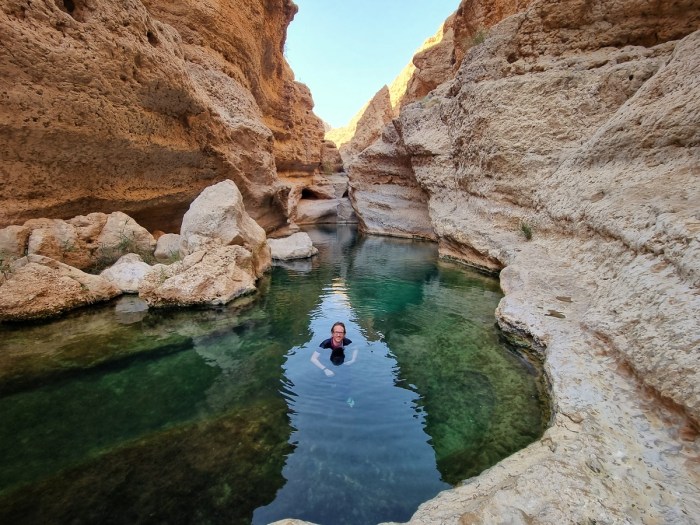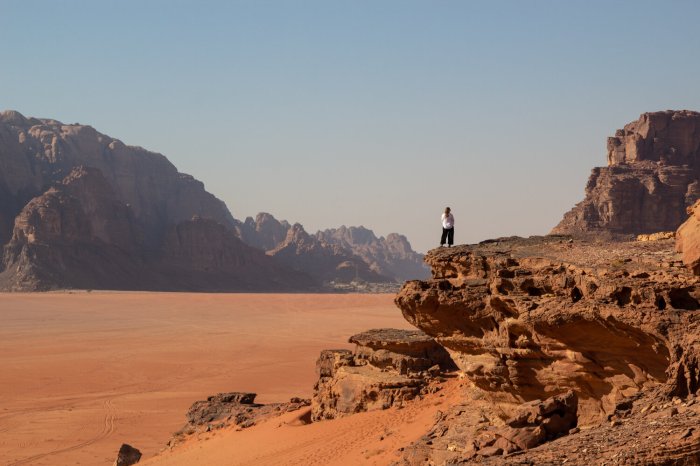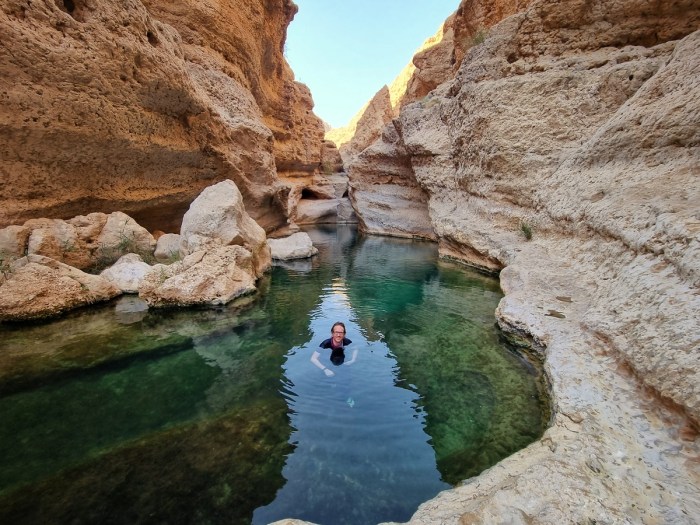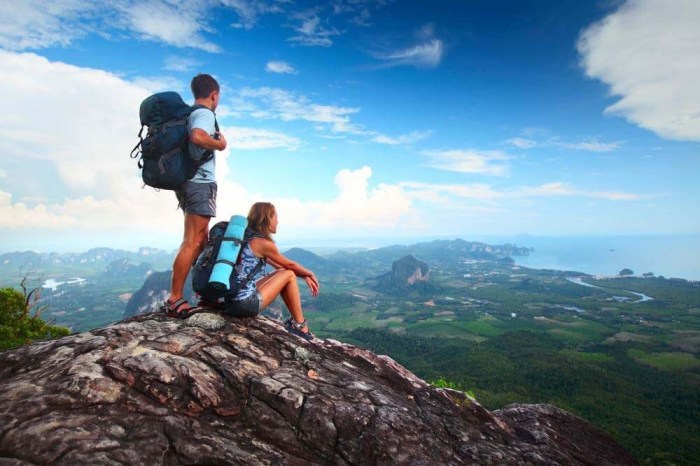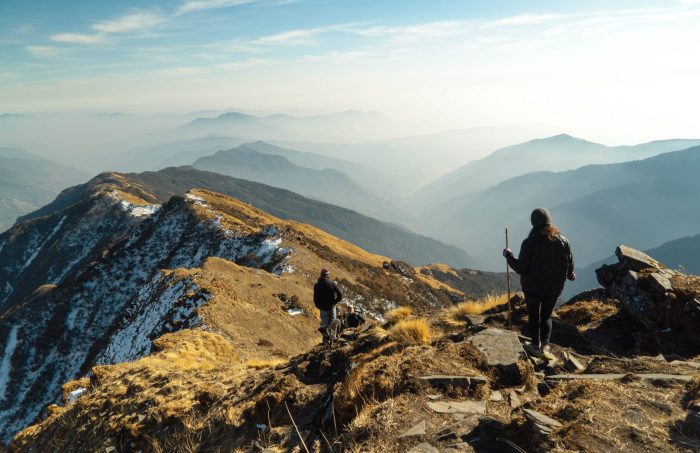Acadia National Park road trip promises breathtaking landscapes and unforgettable experiences. From scenic coastal drives to hiking trails winding through the park’s diverse terrain, this adventure caters to every traveler. This guide will help you plan your perfect 3-day road trip, covering everything from essential packing lists to lodging options, iconic stops, and activities. We’ll also delve into the park’s rich history and cultural significance, as well as wildlife viewing opportunities and budget considerations.
Discover the best time to visit for optimal weather and fewer crowds. We’ll explore potential road closures and seasonal restrictions, ensuring you’re well-prepared for your journey. Prepare to be captivated by the park’s beauty and enjoy the freedom of a personalized road trip.
Introduction to Acadia National Park Road Trip
Acadia National Park, nestled in Maine’s rugged coastline, offers a breathtaking escape into nature’s grandeur. Towering granite peaks, cascading waterfalls, and pristine beaches create a tapestry of diverse landscapes, all within a relatively compact area. This makes a road trip through the park an ideal way to experience its beauty firsthand.The park’s appeal lies in its ability to blend scenic drives with opportunities for hiking, wildlife viewing, and exploring charming coastal towns.
The winding roads, often offering panoramic vistas, provide a unique perspective on the park’s varied ecosystems. The journey itself becomes a part of the experience, making a road trip through Acadia a truly memorable adventure.
Typical Road Trip Duration
A road trip focused on Acadia National Park should be planned for at least three days to fully appreciate its highlights. A shorter trip might feel rushed, leaving you wanting more. A five-day trip, however, allows for more in-depth exploration of the park’s trails, overlooks, and scenic drives, providing ample time to capture the beauty of the landscape and to truly immerse yourself in the experience.
This timeframe accommodates flexibility for unexpected delays or additional stops.
Best Time to Visit
The optimal time to visit Acadia National Park for the best weather and fewer crowds is during the shoulder seasons. Spring (late April to early June) and fall (September to early November) offer pleasant temperatures, fewer crowds compared to summer, and stunning foliage displays. Spring’s vibrant rebirth, marked by wildflowers and budding trees, offers a fresh perspective on the park.
Fall’s breathtaking foliage, with hues of red, orange, and gold, paints the park in a fiery spectacle. Summer, while popular, often comes with higher prices and more visitors, while winter, while beautiful in its own way, may not be ideal for driving or exploring all the park’s features.
Key Features and Attractions
Acadia National Park boasts a diverse range of attractions, each offering a unique experience. The park’s stunning granite peaks, such as Cadillac Mountain, the highest point on the U.S. Atlantic coast, provide breathtaking views. Hiking trails, varying in difficulty, cater to all experience levels, offering opportunities to immerse yourself in the park’s natural beauty. The park’s rugged coastline, with its rocky shores and pristine beaches, provides opportunities for exploring the ocean’s edge.
Acadia National Park’s stunning coastal drives are a must-do on any road trip. After a day exploring the park’s trails and breathtaking views, a well-deserved treat is finding some local brews to unwind with. For a taste of the best craft breweries Brisbane has to offer, check out this guide: best craft breweries brisbane. It’s a perfect way to cap off a fantastic day, before you head back to your accommodation for a night under the stars, ready for more Acadia adventures tomorrow.
Wildlife viewing is another highlight, with opportunities to spot various bird species and potentially larger mammals like deer. Exploring the park’s charming coastal villages, such as Bar Harbor, offers a chance to immerse yourself in the local culture and find unique souvenirs.
Planning Your Acadia Road Trip
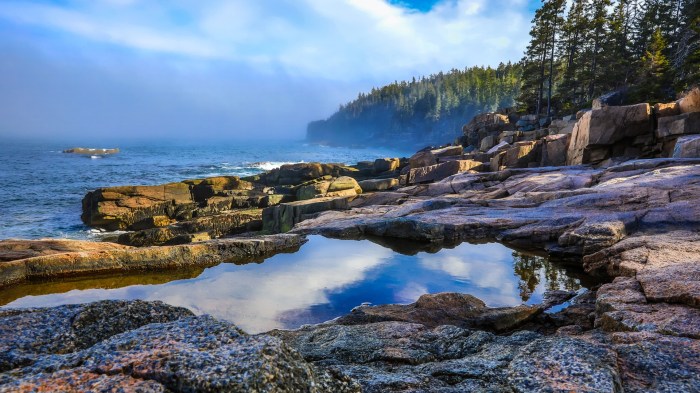
Acadia National Park, a breathtaking expanse of coastal beauty, demands a carefully planned road trip to fully appreciate its wonders. This detailed itinerary and essential packing list will ensure a smooth and memorable journey, while lodging options and potential road closures will help you prepare for any situation.
Three-Day Acadia Road Trip Itinerary
This itinerary focuses on maximizing your time in Acadia, balancing iconic sights with opportunities for exploration. It assumes a moderate pace, allowing for flexibility and enjoyment.
- Day 1: Exploring the Park’s Highlights. Begin your journey at the park’s entrance, stopping at the visitor center for maps and information. Drive along the scenic Park Loop Road, stopping at Thunder Hole for a captivating display of ocean power. Enjoy lunch at a local cafe or picnic amidst the stunning views. In the afternoon, ascend Cadillac Mountain for panoramic vistas and then visit Sand Beach.
Check into your accommodation for the night. Dinner can be enjoyed at a restaurant in Bar Harbor.
- Day 2: Hiking and Coastal Wonders. Dedicate this day to exploring the park’s trails. Consider the Beehive Trail for rewarding views or the Jordan Pond House for a relaxing walk. In the afternoon, visit the charming town of Bar Harbor and browse local shops. Enjoy dinner at a restaurant with harbor views.
- Day 3: Exploring Beyond the Park. Visit the charming town of Northeast Harbor and take a boat tour to admire the coastline. Alternatively, explore the unique shops and galleries. Enjoy a final lunch in the area before departing. The return journey can be made with a stop at a local roadside attraction.
Essential Items for Your Road Trip
Packing light but smartly is key to a comfortable road trip. This list covers essentials for both outdoor adventures and relaxation.
- Clothing: Pack layers for varying weather conditions, including a waterproof jacket and comfortable hiking shoes.
- Gear: A good map, binoculars, sunscreen, and insect repellent are crucial. Consider a portable charger for electronics.
- Food and Drinks: Pack non-perishable snacks and drinks for the road. Don’t forget reusable water bottles.
- First-Aid Kit: Prepare for minor injuries with a well-stocked kit.
- Documents: Carry your driver’s license, park passes, and any necessary insurance information.
Lodging Options in the Area
Acadia offers a variety of accommodations to suit different budgets and preferences.
| Lodging Option | Pros | Cons | Budget |
|---|---|---|---|
| Park Campground | Affordable, close to the park, nature immersion | Limited amenities, can get crowded | Budget |
| Boutique Hotels in Bar Harbor | Comfort, amenities, often unique charm | Higher price, might be farther from park entrance | Mid-Range |
| Vacation Rentals | More space, kitchen facilities, often pet-friendly | May require more cleaning and maintenance | Mid-Range to Luxury |
Potential Road Closures and Seasonal Restrictions
Road conditions and access to certain areas can be affected by weather and season. Checking current conditions before your trip is crucial.
Always consult official park websites for the most up-to-date information on road closures and seasonal restrictions.
Iconic Stops & Scenic Drives
Acadia National Park boasts a network of stunning roads, offering breathtaking views and opportunities for exploration. From the dramatic coastal cliffs to the serene mountain peaks, every drive is a journey through a landscape of natural beauty. Understanding the best routes and iconic spots allows you to maximize your time and appreciate the park’s diverse offerings.The park’s roadways aren’t just for getting from point A to point B; they are integral to experiencing the park’s unique character.
Knowing the distance between key locations allows you to plan your day efficiently and avoid getting lost in the beauty of the park. This section will detail the most iconic stops and scenic drives, providing tips for optimal photo opportunities and insights into the park’s diverse landscapes.
Key Locations & Distances
The park’s layout is designed to maximize your exploration of the diverse landscapes. Understanding the distance between key locations allows for more efficient planning of your itinerary. Knowing how long it takes to travel between locations allows you to allocate time effectively and avoid rushing through the park.
| Location | Distance from Park Entrance (approx.) |
|---|---|
| Thunder Hole | 15 miles |
| Jordan Pond | 8 miles |
| Cadillac Mountain | 12 miles |
| Sand Beach | 10 miles |
| Otter Cliff | 20 miles |
Note: Distances are approximate and may vary depending on the specific route taken.
Scenic Drives & Photo Opportunities
The park’s scenic drives are a must-do for any visitor. These routes are meticulously designed to showcase the park’s natural beauty, offering unparalleled photo opportunities.
- Park Loop Road: This iconic route offers panoramic views of the park, including the rugged coastline, rocky shores, and lush forests. The winding road provides numerous viewpoints for capturing stunning images. Look for opportunities to photograph the iconic granite peaks, and the vibrant hues of the changing foliage, especially in the fall.
- Ocean Path: This coastal route features breathtaking views of the Atlantic Ocean. The rugged cliffs and crashing waves create a dramatic backdrop for photographs. Be prepared for potentially windy conditions and strong ocean spray.
- Park Loop Road (Alternative): Exploring the park’s backroads provides a different perspective on the park. The route winds through the interior of the park, revealing hidden vistas and providing a more intimate connection with the park’s natural beauty. The route offers opportunities to photograph wildlife, particularly in the meadows and along the waterways.
Viewpoints & Their Features
Understanding the unique characteristics of various viewpoints enhances your appreciation of the park’s landscapes.
- Cadillac Mountain: This iconic summit offers unparalleled views of the sunrise, a truly unforgettable experience. The panoramic vistas encompass the surrounding coastline, offering a breathtaking perspective of the park’s natural beauty.
- Thunder Hole: This dramatic coastal feature is a popular spot for witnessing the powerful force of the ocean. The roaring waves crashing against the rocks create a dramatic and awe-inspiring spectacle. Visitors can capture stunning images of the forceful waves against the cliffs.
- Otter Cliff: This viewpoint provides a close-up view of the dramatic coastal cliffs and the Atlantic Ocean. The rugged beauty of the cliffs and the expansive ocean views offer opportunities for capturing the powerful interplay between land and sea.
Activities & Experiences
Acadia National Park offers a plethora of activities to suit every traveler’s interests, from adventurous hikers to relaxed nature enthusiasts. Whether you’re seeking thrilling climbs or peaceful strolls, the park provides an engaging experience for all ages and fitness levels. Beyond the iconic views, the park’s rich ecosystem provides opportunities for unique wildlife encounters and educational insights.Engaging with the park’s diverse landscape through various activities is key to truly appreciating its beauty and grandeur.
From exploring its diverse trails to witnessing its vibrant wildlife, every experience contributes to a richer understanding of this remarkable national park.
Popular Activities
The park’s diverse offerings cater to a wide range of interests. Visitors can enjoy a range of activities, including hiking, biking, wildlife viewing, scenic drives, and even exploring the park’s many visitor centers and exhibits. Each activity offers unique perspectives and opportunities to connect with the natural beauty and history of the park.
- Hiking: Explore a network of trails ranging from easy strolls to challenging climbs, offering spectacular views of the coastline, mountains, and surrounding landscape. From the relatively flat trails to the steep ascents, there’s a trail for every fitness level and experience.
- Biking: Rent a bike and explore the scenic park roads, taking in breathtaking vistas. The park’s well-maintained bike paths provide an excellent way to traverse the park’s diverse terrain and enjoy its natural beauty.
- Wildlife Viewing: Keep an eye out for various bird species, including the majestic bald eagle. Be mindful of your surroundings and follow park guidelines for wildlife viewing to maintain a safe and respectful experience for both you and the animals.
Hiking Trail Comparison
A variety of trails cater to different preferences and skill levels. This table provides a comparison of popular hiking trails based on difficulty and length.
| Trail Name | Difficulty | Length (miles) | Description |
|---|---|---|---|
| Beehive Trail | Moderate | 2.8 | Offers panoramic views of the surrounding landscape. |
| Jordan Pond Loop | Easy | 3.5 | A picturesque loop around a beautiful lake. |
| Cadillac Mountain | Moderate-Difficult | 4.5 | Rewarding summit with stunning sunrise views. |
| Beehive Trail | Strenuous | 8.5 | Challenging climb with rewarding summit views. |
Guided Tours & Ranger Programs
Ranger-led programs provide valuable insights into the park’s history, ecology, and geology. These programs often include informative talks, guided hikes, and wildlife viewing opportunities. Ranger programs enhance the visitor experience by offering specialized knowledge and expertise.
- Ranger-led programs: These programs are scheduled regularly and cover a wide range of topics. Check the park’s website for the schedule and availability.
Restaurants & Cafes
Numerous restaurants and cafes along the route offer a variety of culinary experiences. These establishments cater to different tastes and preferences.
- The Lobster Pound: Famous for its fresh seafood, including lobster rolls and clam chowder. A popular choice for seafood lovers.
- The Bar Harbor General Store: Offers a range of sandwiches, salads, and pastries. A great spot for a quick bite or light meal.
- The Acadia Cafe: Serves a variety of sandwiches, soups, and salads. A versatile choice for a quick lunch or a light meal.
Accommodation Options & Logistics
Planning your Acadia National Park road trip involves more than just scenic drives and iconic stops. Crucial to a smooth and enjoyable experience is understanding the available accommodations, transportation options, and park regulations. This section will help you navigate these logistical details, ensuring your trip is well-managed and worry-free.Understanding the range of accommodation options, from budget-friendly to luxurious, is key to finding the perfect fit for your trip.
Transportation within the park, parking policies, and necessary gear for outdoor activities will also be discussed to maximize your enjoyment of the park.
Accommodation Options
A variety of accommodations caters to different budgets and preferences. From cozy cabins to comfortable hotels, the options near Acadia National Park offer something for everyone.
Acadia National Park’s scenic byways are a joy to explore, winding through stunning coastal landscapes. However, thinking about the impact of events like California wildfires on wildlife populations, such as the mountain lion population, here is a resource examining the consequences, makes me reflect on the delicate balance of nature. Hopefully, these insights will encourage us to appreciate even more the beauty and resilience of Acadia’s ecosystem.
- Within the Park: Several lodges and campgrounds are located directly within the park. These offer a truly immersive experience, placing you amidst the stunning scenery. However, reservations are essential, especially during peak season. Amenities often include basic services like restrooms and picnic tables. Consider the trade-off between immersion and convenience when choosing this option.
- Near the Park: Numerous hotels, motels, and vacation rentals are situated in towns surrounding the park. These often provide more amenities, such as pools, restaurants, and potentially more spacious accommodations. They provide easier access to shops and restaurants outside the park. The trade-off is that the scenery might be less immediately immersive, but convenience is improved.
- Campgrounds: Campgrounds offer a budget-friendly way to experience the outdoors. They typically provide basic amenities and a chance to connect with nature. Reservations are crucial, particularly during high season, and expect some level of self-sufficiency. They are excellent for families and budget-conscious travelers.
Transportation Options
Navigating Acadia National Park requires careful consideration of transportation.
- Car Rentals: A car is the most versatile option for exploring the park. It allows you to access a wide range of trails and viewpoints at your own pace. Be prepared for potential parking challenges, especially at popular locations, and consider the possibility of traffic congestion during peak seasons.
- Park Shuttles: The park offers shuttle services that operate on specific routes, reducing the need for personal vehicles. These services are especially beneficial for visitors who prefer not to drive or wish to reduce parking stress. They are typically most efficient in the more densely populated areas of the park.
- Public Transport: Public transportation options may be limited or may not directly access the park. While buses might serve surrounding towns, direct access to many areas within the park may require additional transportation.
Parking Availability & Regulations
Parking in Acadia National Park can be challenging, particularly during peak season. Knowing the parking regulations and availability at different locations is essential for a smooth trip.
- Designated Parking Areas: Many popular attractions and viewpoints have designated parking areas. These areas are often limited and require advance planning, especially during high season. Be prepared for potential wait times or alternative parking options.
- Parking Fees: Some parking areas within the park may have fees associated with them. It’s crucial to be aware of these fees and make appropriate arrangements to pay.
- Parking Restrictions: Specific parking regulations, such as time limits or restrictions on oversized vehicles, might apply in certain areas. Be sure to check for any restrictions in advance to avoid fines.
Recommended Gear for Outdoor Activities, Acadia national park road trip
Proper gear is crucial for a safe and enjoyable outdoor experience.
- Hiking Boots: Sturdy, supportive hiking boots are essential for traversing trails. Choose a pair that fits well and provides adequate ankle support.
- Layers of Clothing: Acadia’s weather can change quickly. Pack layers of clothing, including a waterproof jacket and pants, to adapt to varying conditions.
- Sun Protection: Protect yourself from the sun with sunscreen, a hat, and sunglasses.
- Insect Repellent: Insect repellent is necessary to combat mosquitos and other insects, especially during warmer months.
- First-Aid Kit: A basic first-aid kit can be invaluable for minor injuries or illnesses.
Wildlife & Nature
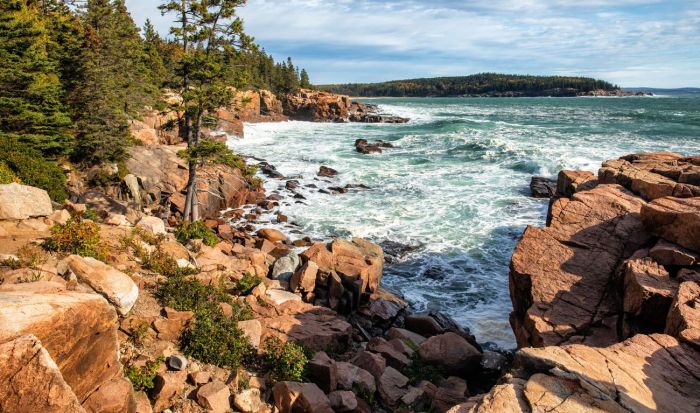
Acadia National Park boasts a captivating blend of diverse wildlife and stunning natural landscapes. From soaring birds to elusive mammals, the park offers a rich ecosystem teeming with life. Exploring this natural wonderland provides a unique opportunity to appreciate the delicate balance of nature and the interconnectedness of its various components. Understanding the park’s flora and fauna is crucial to fully appreciating the beauty and importance of this protected area.The park’s ecosystem, encompassing a range of habitats from rocky coastlines to lush forests, supports a surprising variety of species.
Careful observation and appreciation for the subtle details of the environment are key to a rewarding experience. Wildlife viewing opportunities are abundant along the park’s many scenic routes.
Common Wildlife
A variety of animals inhabit Acadia, each playing a vital role in the park’s delicate balance. These include numerous bird species, small mammals, and fascinating insects.
- Birds: Acadia is home to a significant number of bird species, including the iconic Bald Eagle. Other common birds include various species of owls, hawks, woodpeckers, and songbirds. Their diverse calls and behaviors are a constant source of wonder for visitors.
- Mammals: Black bears, though shy, can be encountered in certain areas. White-tailed deer are frequently sighted grazing in meadows and along roadsides. Other mammals include foxes, raccoons, and a variety of smaller mammals. Care must be taken to maintain a safe distance and never approach wildlife.
- Insects: A multitude of insects, butterflies, and other invertebrates contribute to the park’s biodiversity. Their presence adds another layer of wonder to the natural world. Butterflies, moths, and beetles can be found in various habitats, particularly in the forest areas.
Plant Life
The diverse plant life in Acadia is just as remarkable as the wildlife. The park’s varied landscapes support a wide range of flora.
Acadia National Park’s road trip is breathtaking, with stunning coastal drives and hiking trails. However, if you’re looking for a different kind of adventure, exploring the bayou boardwalks of Louisiana offers a unique experience, like those incredible, slow-moving bayou boardwalks found in bayou boardwalks best louisiana outdoors. Returning to Acadia, the park’s diverse landscapes still make for a fantastic trip, though!
- Flora Highlights: Dominating the rocky coastlines are the hardy coastal plants, including various grasses, wildflowers, and shrubs. The forests support a rich tapestry of trees, including pines, spruces, and hardwoods. The varied altitudes and soil types allow for a surprising diversity of plants.
- Specific Flora: The distinctive Acadian forest is notable for its diversity of plant species. Specific examples include various types of ferns, wildflowers, and flowering plants. These contribute to the overall aesthetic and ecological balance of the park.
Ecosystem Significance
Acadia National Park’s ecosystem plays a vital role in maintaining biodiversity. The interconnectedness of the different species and their environment contributes to a robust and resilient ecosystem.
- Importance: The park’s diverse habitats provide critical breeding and feeding grounds for numerous species, supporting the continuation of life. It also helps maintain the ecological balance of the region. Maintaining a balance within the ecosystem is essential for preserving the natural world.
Wildlife Viewing Opportunities
Several areas in Acadia provide prime opportunities for wildlife viewing. These areas offer a unique opportunity to appreciate the beauty and wonder of the park’s wildlife.
- Scenic Drives: The park’s many scenic drives, such as the Park Loop Road and the Ocean Path, offer excellent chances to spot wildlife. Careful observation along these routes can yield surprising discoveries.
- Observation Points: Designated observation points, often equipped with viewing platforms, allow for safe and focused wildlife viewing. These areas are strategically located to provide the best possible viewing experiences.
Budget Considerations
Planning a road trip to Acadia National Park requires careful consideration of costs. While the beauty of the park is priceless, the experience can range in price depending on your choices for accommodation, food, and activities. This section details estimated costs, different budget levels, and ways to save money, helping you plan a trip that fits your budget.
Estimated Costs for a Road Trip
Budgeting for a road trip involves considering accommodation, food, activities, and potential unexpected expenses. Accommodation costs in Acadia vary significantly depending on the time of year and the type of lodging. Camping offers a budget-friendly option, while hotels or vacation rentals provide more comfort but at a higher cost. Food expenses depend on your dining choices; casual meals are more affordable than fine dining.
Activities like park entrance fees, boat tours, and scenic drives add to the overall cost.
Different Budget Levels and Their Impact
The experience of your Acadia road trip will vary based on your allocated budget. A budget-conscious trip might involve camping, packing lunches, and choosing free activities. A mid-range budget could include staying in a cabin or a cozy bed and breakfast, along with a mix of free and paid activities. A higher budget allows for luxurious accommodations, gourmet meals, and access to exclusive experiences like private tours.
Potential Cost-Saving Measures for an Economical Road Trip
Several strategies can help you keep costs down. Consider camping instead of hotels; packing your own lunches and snacks can drastically reduce food expenses; take advantage of free activities like hiking on park trails; and explore discounts or deals on activities.
Sample Budget Breakdown for a 3-Day Trip
| Category | Budget-Friendly Option | Mid-Range Option | Luxury Option |
|---|---|---|---|
| Accommodation (3 nights) | Camping ($100) | Cabin Rental ($300) | Luxury Hotel ($600) |
| Food (3 days) | Packed Lunches & Snacks ($150) | Casual Dining ($300) | Fine Dining & Restaurant Meals ($450) |
| Activities (Park Entrance Fees, etc.) | Free Hiking & Scenic Drives ($50) | Boat Tour & Guided Hike ($150) | Private Guided Tour & Wildlife Viewing ($250) |
| Transportation | Gas & Parking ($100) | Gas & Parking ($150) | Gas & Parking ($200) |
| Total Estimated Cost | $400 | $900 | $1450 |
Note that these are estimated costs and actual expenses may vary. These figures represent a basic example and do not include personal expenses like souvenirs, or unexpected costs. Factors like the time of year, specific choices for activities, and any extra expenses will influence the final cost.
Historical & Cultural Significance
Acadia National Park, nestled along the rugged Maine coast, boasts a rich tapestry of history and culture woven into its very landscape. From its origins as a private estate to its current status as a national treasure, the park’s story is one of evolving human interaction with the natural world. Understanding this history provides a deeper appreciation for the park’s present-day character and the values it represents.The park’s historical narrative is intertwined with the stories of the people who have inhabited and shaped the region.
Early European settlers, Native American tribes, and later generations of Americans all left their mark on the land, contributing to the unique cultural identity that defines Acadia today.
Early Settlement & Native American History
The area that now comprises Acadia National Park was inhabited by various Indigenous peoples for millennia before European arrival. Evidence suggests that the Penobscot, Passamaquoddy, and other tribes had established complex social structures and traditions within the region. Their deep connection to the land is evident in their traditional practices, knowledge of the environment, and spiritual beliefs, which continue to influence the cultural landscape of the area.
While specific historical accounts from this era are limited, archeological findings and oral traditions provide valuable insights into the lives of these early inhabitants.
The Development of Mount Desert Island
The history of Acadia is profoundly shaped by the story of Mount Desert Island, the heart of the park. The island’s transformation from a vast wilderness to a popular tourist destination is marked by significant milestones. In the 19th century, the island attracted wealthy vacationers and entrepreneurs, leading to the construction of grand estates and resorts. This influx of visitors spurred the development of infrastructure, including roads, hotels, and recreational facilities, laying the foundation for the park’s eventual establishment.
Notable Historical Landmarks
Several sites within Acadia National Park offer tangible connections to its past. One of these is the historic Bar Harbor village, with its charming shops and restaurants. These structures reflect the evolving commercial and social landscape of the island. Another prominent landmark is the Jordan Pond House, a historic lodge that has witnessed generations of visitors and holds a place in the park’s story as a cultural gathering point.
Exploring these landmarks provides a tangible link to the park’s historical evolution.
The Establishment of Acadia National Park
The establishment of Acadia National Park as a protected area was a gradual process. Initial efforts focused on preserving specific areas of natural beauty and historical significance. Over time, these efforts culminated in the formal establishment of the park, safeguarding the unique ecological and cultural heritage of the region. The act of preservation and the park’s designation marked a significant step in recognizing the area’s importance to the nation.
Cultural Significance in Modern Times
Acadia National Park’s cultural importance extends beyond its historical landmarks and natural beauty. The park serves as a significant destination for outdoor recreation, attracting visitors from across the nation and the world. This influx of people contributes to the local economy and fosters an appreciation for the region’s natural and cultural heritage. The park’s significance is not merely historical but also contemporary, reflecting the enduring human connection with the landscape.
Essential Tips & Tricks
Embarking on an Acadia National Park road trip requires more than just planning the route. Knowing the ins and outs of the park, from its winding roads to its unpredictable weather, is key to a smooth and enjoyable experience. This section provides essential tips and tricks for navigating the park successfully, ensuring your safety, and maximizing your enjoyment.
Navigating Acadia’s Roads & Trails
Acadia National Park boasts a network of scenic roads, but some are narrow and winding, especially during peak season. Understanding the road conditions and potential challenges is crucial for a safe and enjoyable trip. Familiarize yourself with the park’s map and elevation profiles before your visit. This will help you anticipate potential delays and choose appropriate routes.
Look for signs indicating road closures or detours. Allow ample time for travel, especially during peak hours or if you encounter unexpected traffic.
Safety Tips for a Secure Trip
Safety is paramount when exploring Acadia. Knowing how to navigate potentially challenging situations can enhance your enjoyment and minimize risks.
- Carry a fully charged cell phone and consider a portable charger. Cell service can be spotty in some areas, especially within the park. Having a backup power source will help ensure you can stay connected if needed.
- Pack appropriate clothing and gear for changing weather conditions. Layers are essential. A waterproof jacket and sturdy hiking shoes are crucial, especially if you plan on exploring the trails.
- Be aware of wildlife. Keep a safe distance from animals. Never feed or approach them. Store food properly to avoid attracting unwanted guests.
- Be mindful of potential hazards. Watch out for loose rocks, uneven terrain, and slippery surfaces, particularly after rain or snow. Check trail conditions before venturing out.
Weather Considerations & Resources
The weather in Acadia can change rapidly. Staying informed about current conditions is vital for a safe and successful trip.
- Monitor weather forecasts regularly. Use reliable sources like the National Weather Service or the park’s website. Real-time updates can significantly improve your trip planning.
- Understand the potential impact of weather on road conditions. Be prepared for possible closures or delays due to rain, snow, or strong winds. Keep an eye on the latest information.
- Check for updated information regarding road closures, trail conditions, and park operations on the official Acadia National Park website. This website often features real-time information and warnings.
Obtaining Updated Information
Staying informed about park conditions is essential. Several resources can help you stay up-to-date.
- The official Acadia National Park website is a reliable source of current information. Check for road closures, trail conditions, and park alerts.
- Local news outlets and social media groups dedicated to Acadia can also provide valuable updates.
Example Itinerary Variations
Embarking on an Acadia National Park road trip offers unparalleled flexibility. Tailoring your experience to your interests is key, whether you’re a seasoned hiker, a wildlife enthusiast, or a passionate photographer. This section explores diverse itinerary options to help you craft the perfect adventure.
Hiking Focused Itinerary
This itinerary prioritizes the park’s renowned hiking trails, allowing ample time for exploration and appreciation of the natural beauty. The itinerary focuses on a balance of challenging and accessible trails, catering to different fitness levels.
- Day 1: Arrive and settle into your accommodation. Begin your hiking journey with a moderate trek along the Beehive Trail, offering panoramic views. Enjoy a picnic lunch amidst the stunning scenery.
- Day 2: Tackle the challenging summit of Cadillac Mountain for sunrise views, followed by a hike on the Ocean Path, enjoying coastal vistas. Stop at the Jordan Pond House for refreshments and stunning views.
- Day 3: Explore the less-traveled trails of the park, such as the Beehive Trail or the Precipice Trail. Enjoy a leisurely hike through the woods, returning to your accommodation for a well-deserved dinner.
- Day 4: Enjoy a final hike along the Park Loop Road, admiring the various viewpoints. Depart the park, filled with unforgettable hiking memories.
Wildlife Viewing Itinerary
This itinerary is designed for nature lovers interested in spotting Acadia’s diverse wildlife, from birds to mammals. It prioritizes locations known for wildlife sightings, incorporating flexibility for unexpected encounters.
- Day 1: Arrive and settle into your accommodation. Drive along the park’s scenic routes, keeping an eye out for wildlife. Spend the afternoon at the Jordan Pond area, known for its birdlife.
- Day 2: Visit the Schoodic Peninsula, known for its opportunities for spotting moose and other animals. Observe the unique ecosystem and take note of the local bird species.
- Day 3: Spend the day at the Thunder Hole, a location frequently visited by tourists looking for wildlife. Look for seals, birds, and other marine life along the coast.
- Day 4: Return to the park’s main areas, revisiting potential wildlife viewing spots. Enjoy a final wildlife-focused exploration before departing.
Photography Focused Itinerary
This itinerary is tailored for those seeking stunning photographic opportunities throughout the park. It prioritizes scenic viewpoints and diverse landscapes, allowing ample time for capturing the park’s beauty.
- Day 1: Arrive and settle into your accommodation. Drive the scenic Park Loop Road, stopping at various points to capture the changing light and landscapes. Photograph the iconic granite peaks and the coastal views.
- Day 2: Visit the summit of Cadillac Mountain for sunrise and sunset photography, capturing the unique lighting effects. Explore the surrounding areas for diverse perspectives and landscapes.
- Day 3: Focus on the shoreline for images of the rugged coastlines, waves, and rocky outcroppings. Seek out opportunities to capture the park’s diverse flora and fauna.
- Day 4: Spend time exploring the forests and meadows for intimate photography opportunities. Take advantage of the final daylight hours for some last-minute photo shoots. Depart the park with a collection of breathtaking memories.
Itinerary Comparison
| Itinerary | Focus | Key Activities | Accommodation Considerations |
|---|---|---|---|
| Hiking Focused | Hiking and scenic views | Beehive Trail, Cadillac Mountain, Ocean Path | Accommodation near hiking trails |
| Wildlife Viewing | Wildlife observation | Schoodic Peninsula, Jordan Pond, Thunder Hole | Accommodation near wildlife viewing spots |
| Photography Focused | Scenic landscapes and wildlife | Cadillac Mountain, Park Loop Road, Coastlines | Accommodation with convenient access to viewpoints |
Flexibility of the Road Trip Approach
The beauty of a road trip lies in its adaptability. These are just examples; feel free to customize them based on your interests. You can swap activities, add or remove days, and adjust the pace to your liking.
Adapting the Itinerary to Personal Preferences
Your personal preferences and interests will determine the perfect itinerary. If you’re passionate about a particular trail or wildlife species, focus on those areas. If you prefer a slower pace, allocate more time for each activity. If you’re on a tight schedule, prioritize key destinations and activities. The road trip approach allows for the ultimate flexibility in creating a unique and unforgettable experience.
Final Review: Acadia National Park Road Trip
In conclusion, an Acadia National Park road trip is a journey of exploration and discovery. From the stunning vistas to the unique experiences, this trip offers something for everyone. This guide provides a comprehensive overview, helping you plan your own unforgettable adventure. Pack your bags, embrace the journey, and get ready to create memories that will last a lifetime!
